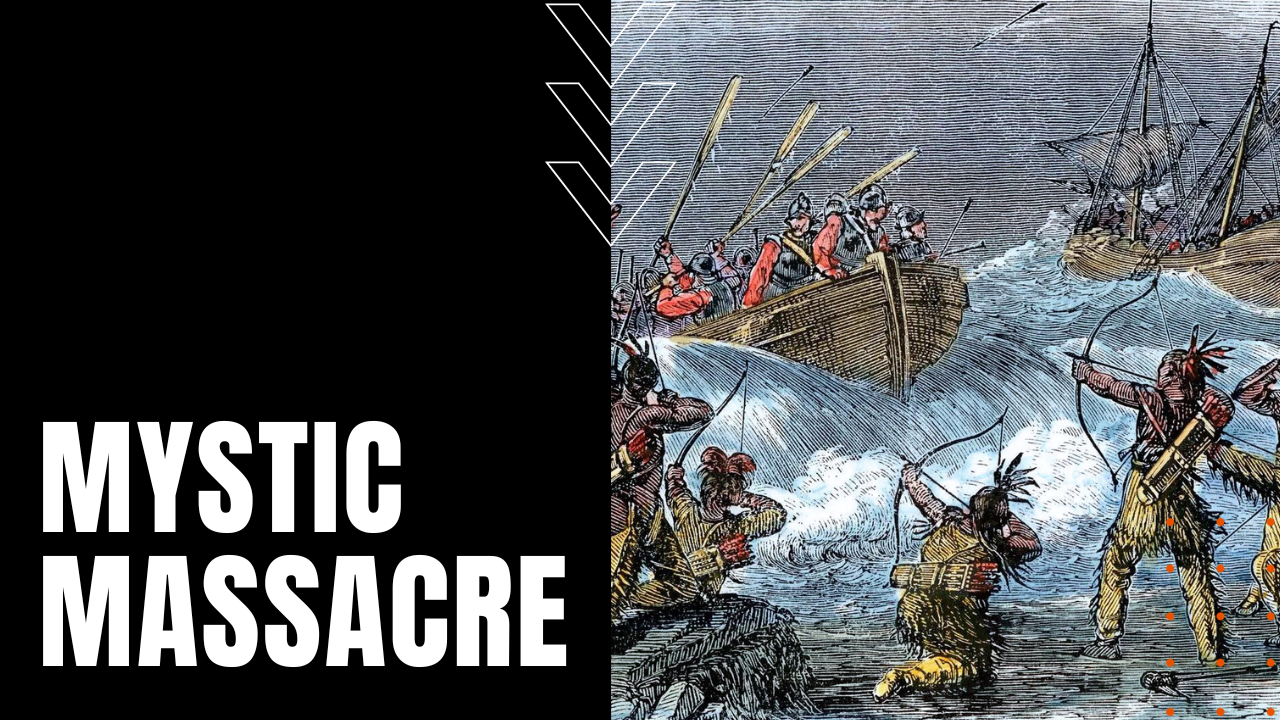The Mystic Massacre

After Puritan settlers from Massachusetts Bay Colony spread into present-day Connecticut, conflicts with the Pequot people of southeastern Connecticut set off the Pequot War of 1636 to 1638, which saw English settlers and their Native American allies the Mohegans and the Narragansett, take up arms against the increasingly violent Pequot.
Murder Begets Murder
After the English accused Pequot warriors of murdering thirteen English settlers and traders in the summer of 1636, Henry Vane and John Winthrop accepted Pequot chief Sassacus’ explanation for the murders, who in turn agreed to pay wampum to atone for the deaths, but when Vane sent Massachusetts Bay Colony Governor John Endicott to one of the Pequots forts to demand additional wampum, at the same time demanding Pequot children to be held as hostages to ensure the native’s good behavior, the Pequots refused.
Retaliatory Raids
After Endicott attacked and burned several Niantic villages on Block Island, followed by a Pequot village along the Connecticut River, the Pequots retaliated with a string of raids on English settlements that persisted into the spring of 1637. With an eye on eliminating the Pequot threat once and for all, Endicott organized a large military force, but before they could march, 200 Pequot warriors responded to the buildup on April 23rd, attacking a Connecticut settlement that took the lives of six men and three women, while two young girls were taken hostage.
Massacre Begins
In response, on May 26th of that same year, the Puritans and their native allies set fire to the Pequot’s fort at Mystic, before slaughtering upwards of 500 to 700 men, women and children in less than an hour, although many scholars believe the death toll was far higher than that. Looking to annihilate the Pequot people, a second slaughter took place on June 5th near present-day Stonington, while a third slaughter on July 28th near present-day Fairfield, effectively ending the Pequot War, as well as the majority of Pequot people.
Very Few Survivors
Of the 3,000 Pequots living in Connecticut prior to the Mystic Massacre, at war’s end, an estimated 200 Pequots remained alive. Of the survivors, most were sold into slavery, while a fortunate few were absorbed into other local tribes, making the Mystic Massacre, one of the bloodiest events in early colonial history.
